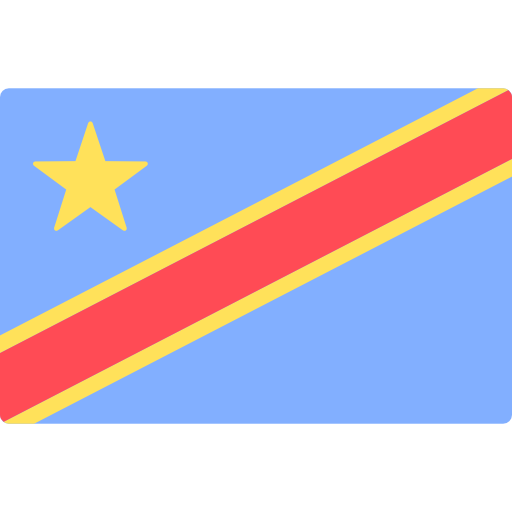Cost Of Living For a Student in Congo Democratic Republic 2025
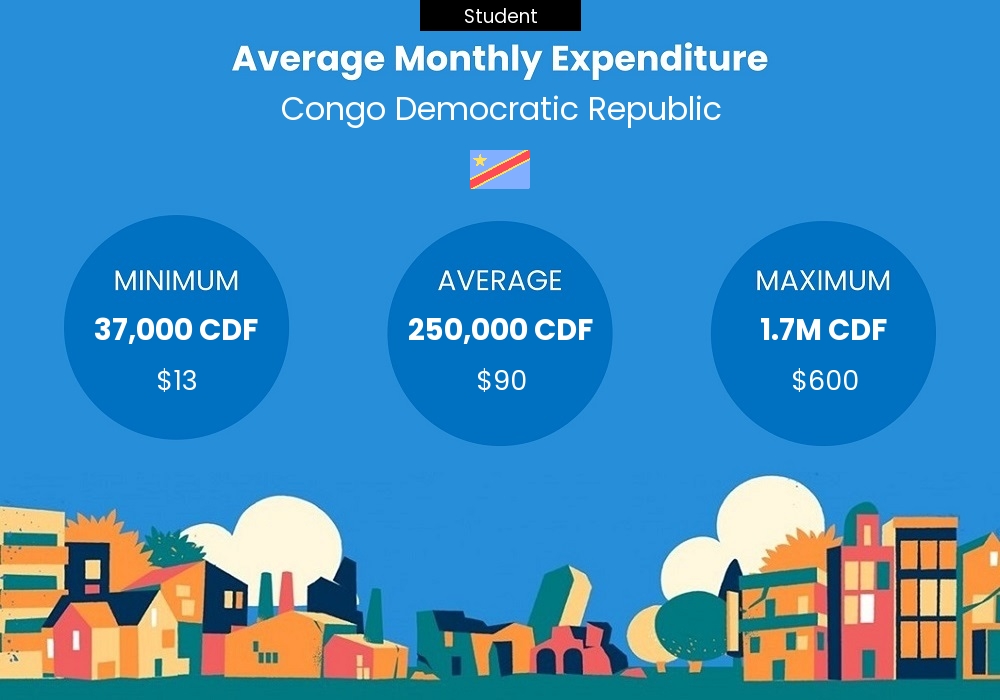
Average Monthly Expenditure
Currency: CDF
Average monthly spending for students in Congo Democratic Republic
How much money does a student need in a month to survive in Congo Democratic Republic?
Students in Congo Democratic Republic spend around 250,000 CDF per month on average. Depending on the lifestyle, a student can survive with a monthly budget as low as 37,000 CDF or as high as 2.8M CDF. Location is a very important factor and has a huge influence on expenditure and budget.
Prices and cost of goods and services in Congo Democratic Republic
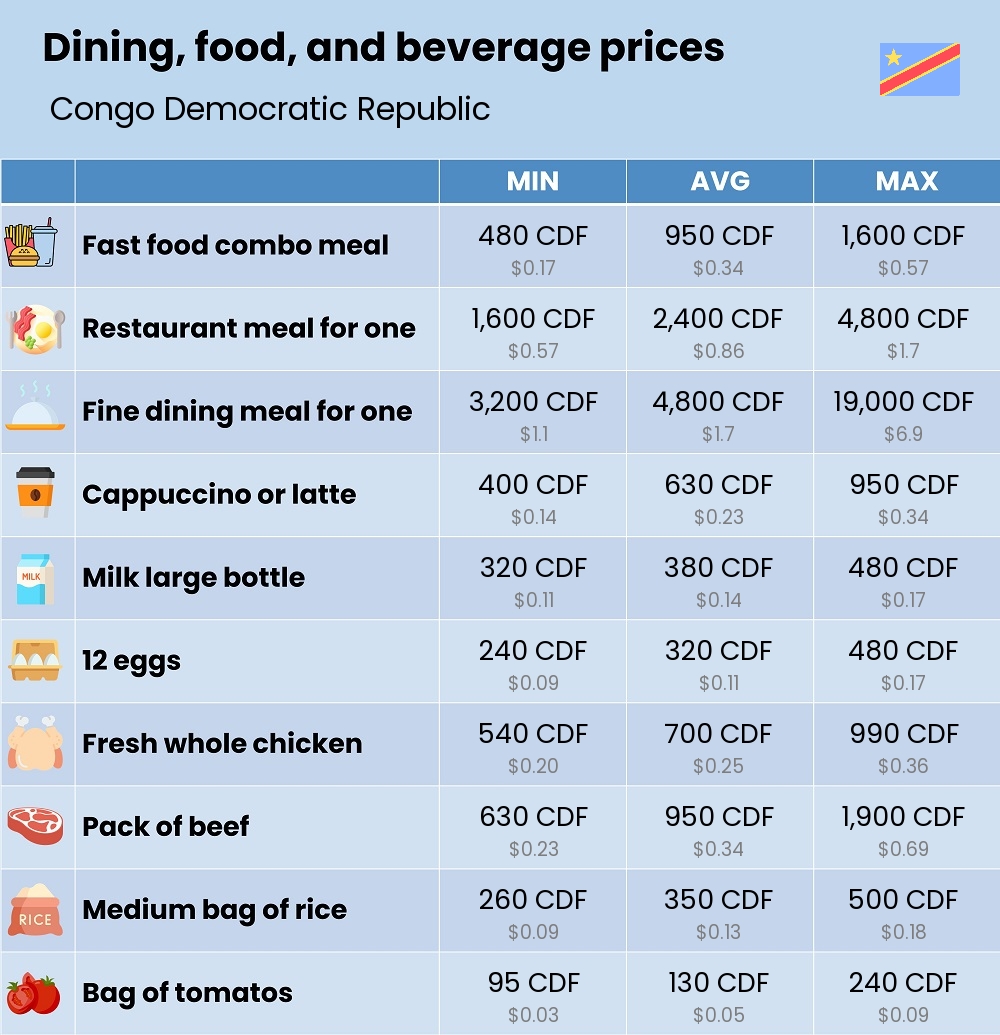
Dining, food, and beverages costs

Fast food combo meal
| 480 CDF | 950 CDF | 1,600 CDF |

Restaurant meal for one
| 1,600 CDF | 2,400 CDF | 4,800 CDF |

Fine dining meal for one
| 3,200 CDF | 4,800 CDF | 19,000 CDF |

Cappuccino or latte
Grocery and market costs
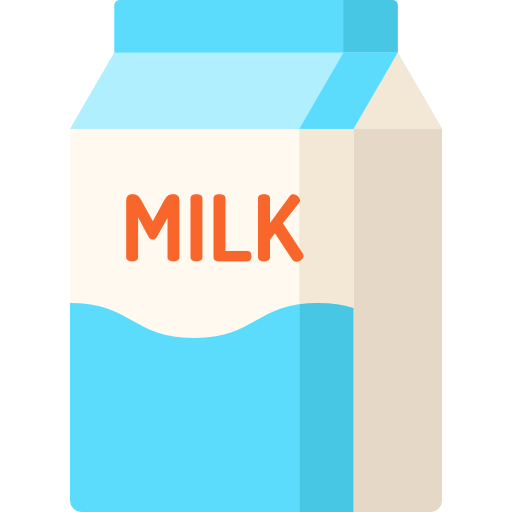
Milk large bottle

12 eggs

Fresh whole chicken

Pack of beef
| 630 CDF | 950 CDF | 1,900 CDF |

Medium bag of rice

Bag of tomatos

Bag of apples
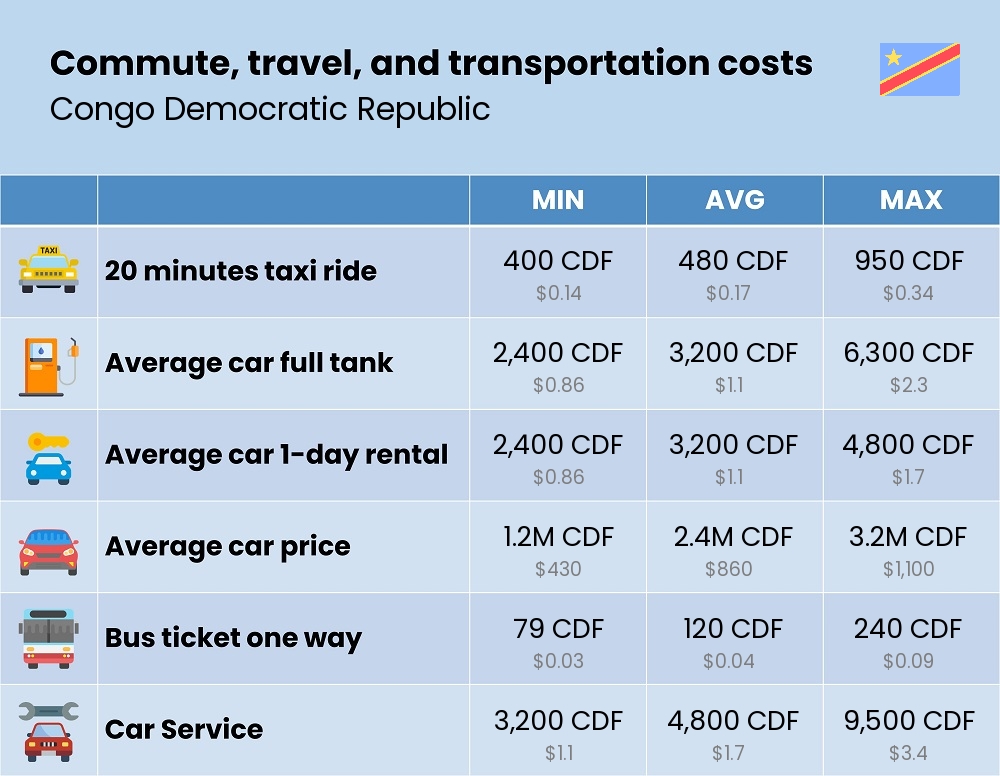
Commute, travel, and transportation costs

20 minutes taxi ride
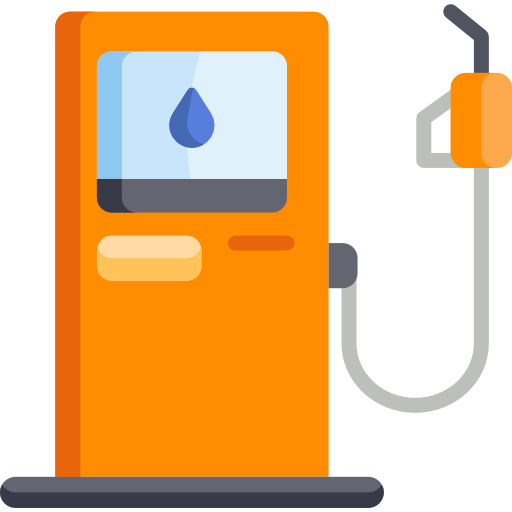
Average car full tank
| 2,400 CDF | 3,200 CDF | 6,300 CDF |

Average car 1-day rental
| 2,400 CDF | 3,200 CDF | 4,800 CDF |

Average car price
| 1.2M CDF | 2.4M CDF | 3.2M CDF |

Bus ticket one way

Car Service
| 3,200 CDF | 4,800 CDF | 9,500 CDF |
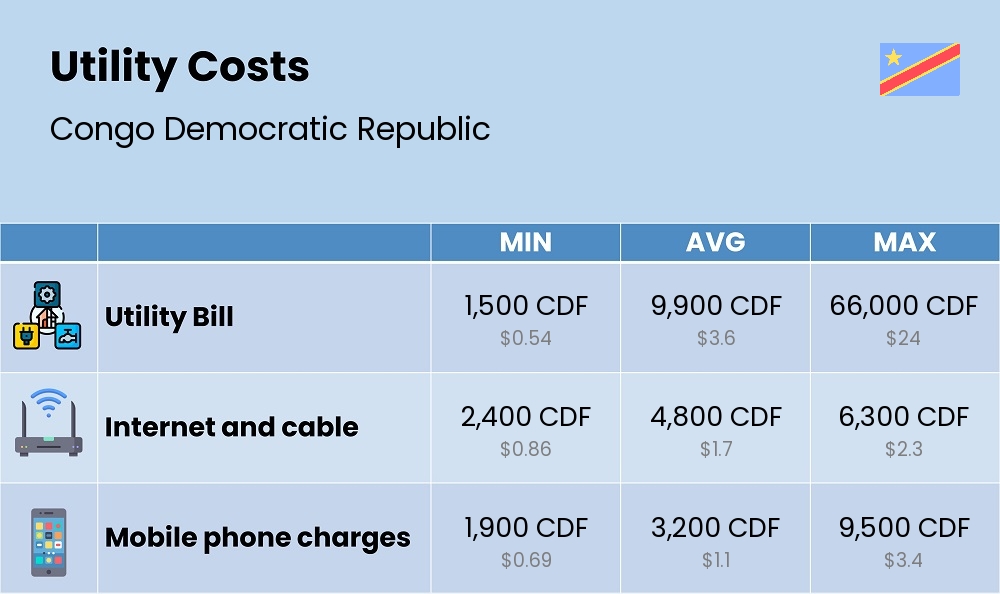
Utility cost (monthly)
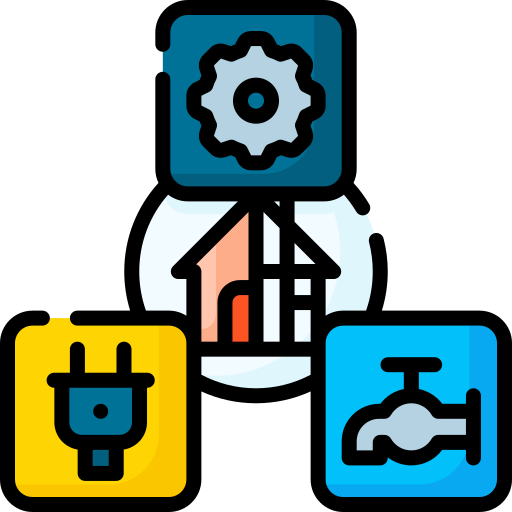
Utility Bill - Student
| 1,500 CDF | 9,900 CDF | 110,000 CDF |

Internet and cable
| 2,400 CDF | 4,800 CDF | 6,300 CDF |

Mobile phone charges
| 1,900 CDF | 3,200 CDF | 9,500 CDF |
Leisure and activities costs

Movie ticket
| 1,200 CDF | 1,600 CDF | 2,400 CDF |

One month gym membership
| 3,800 CDF | 4,800 CDF | 9,500 CDF |
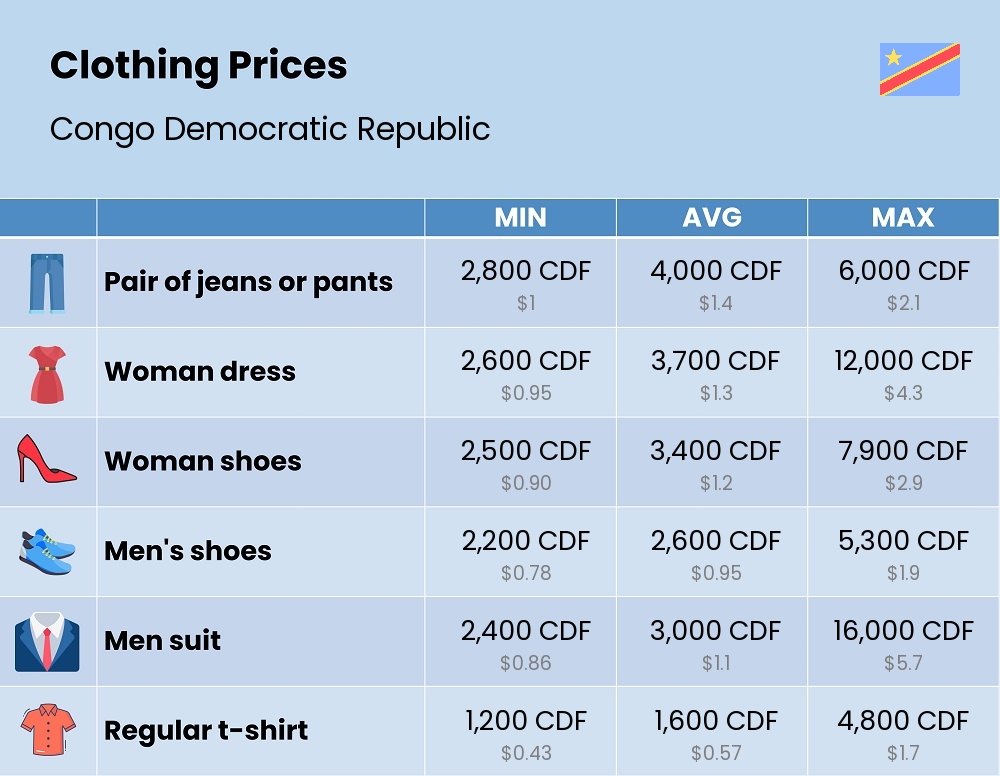
Cloths and accessories costs

Pair of jeans or pants
| 2,800 CDF | 4,000 CDF | 6,000 CDF |

Woman dress
| 2,600 CDF | 3,700 CDF | 12,000 CDF |

Woman shoes
| 2,500 CDF | 3,400 CDF | 7,900 CDF |

Men's shoes
| 2,200 CDF | 2,600 CDF | 5,300 CDF |

Men suit
| 2,400 CDF | 3,000 CDF | 16,000 CDF |

Regular t-shirt
| 1,200 CDF | 1,600 CDF | 4,800 CDF |
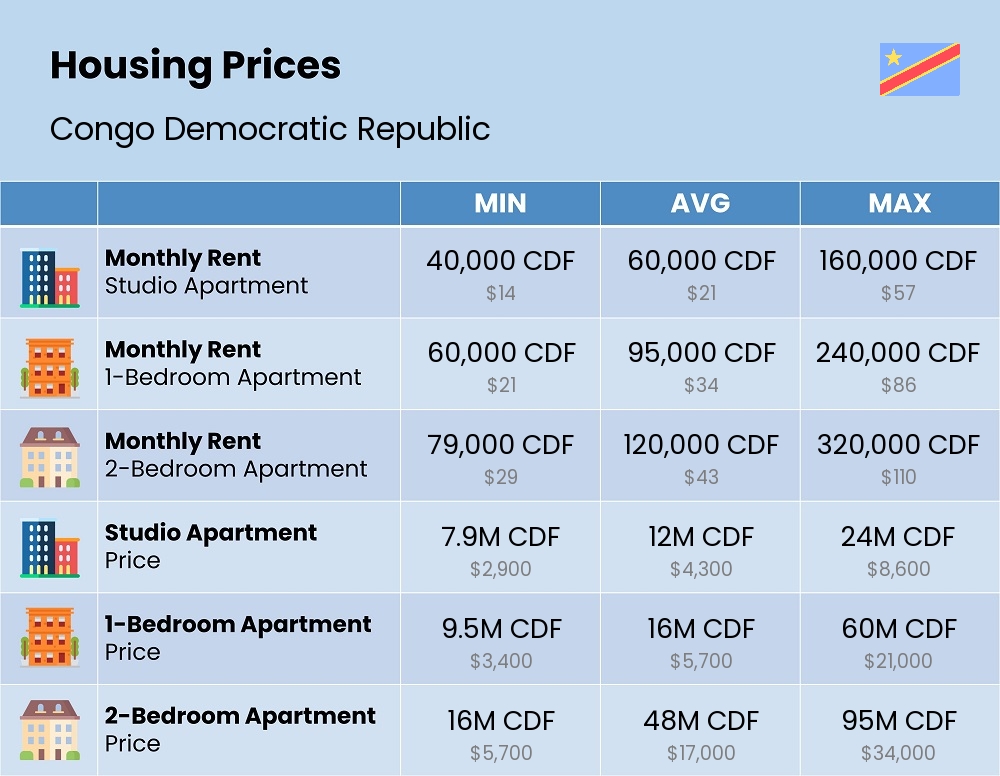
Housing costs / monthly rent

Studio apartment
| 40,000 CDF | 60,000 CDF | 160,000 CDF |
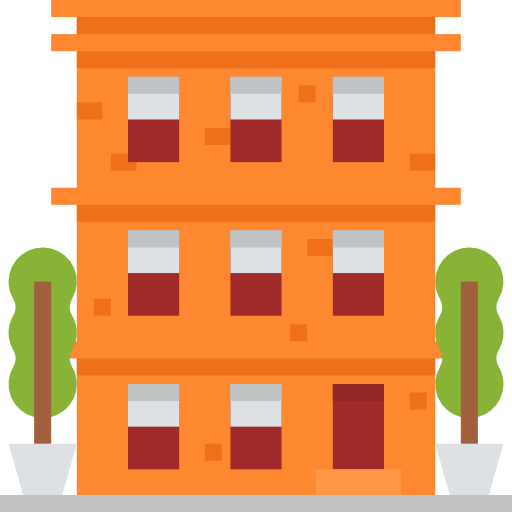
1-bedroom apartment
| 60,000 CDF | 95,000 CDF | 240,000 CDF |

2-bedroom apartment
| 79,000 CDF | 120,000 CDF | 320,000 CDF |
Housing costs / Buying

Studio apartment

1-bedroom apartment

2-bedroom apartment
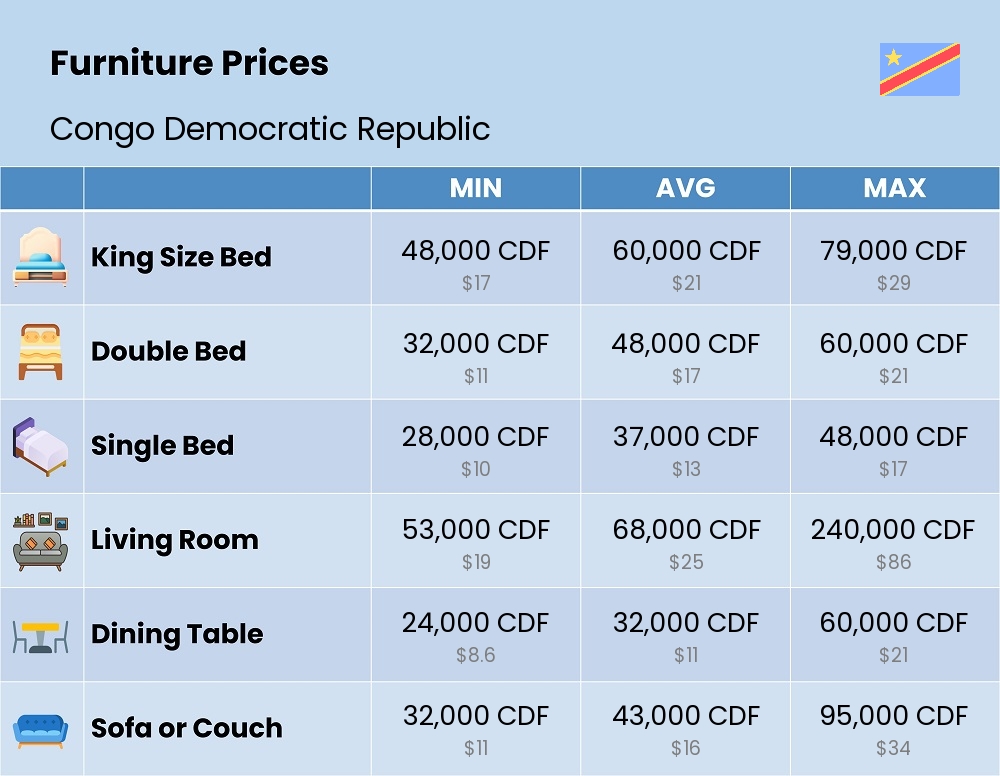
Furniture Costs

King Size Bed
| 48,000 CDF | 60,000 CDF | 79,000 CDF |
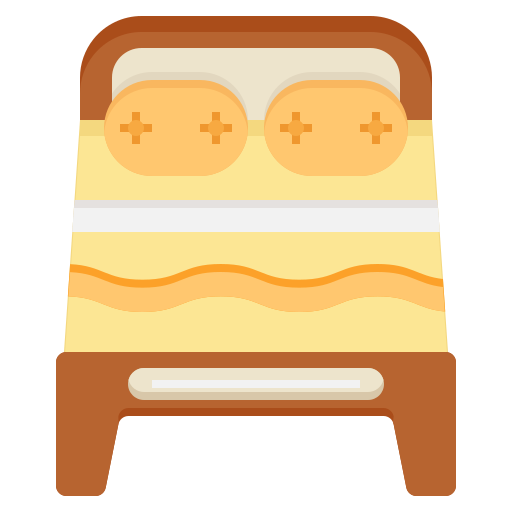
Double Bed
| 32,000 CDF | 48,000 CDF | 60,000 CDF |

Single Bed
| 28,000 CDF | 37,000 CDF | 48,000 CDF |

Living Room
| 53,000 CDF | 68,000 CDF | 240,000 CDF |
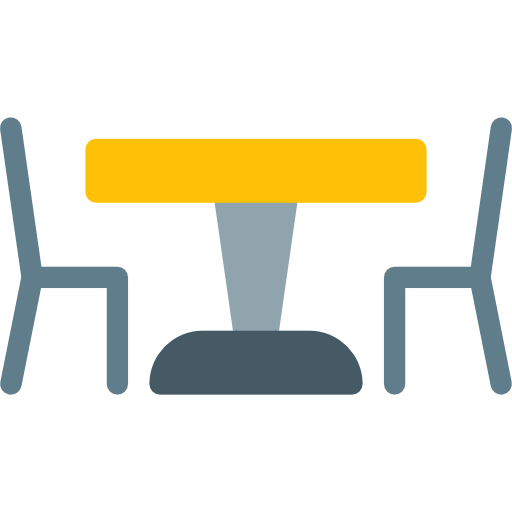
Dining Table
| 24,000 CDF | 32,000 CDF | 60,000 CDF |

Sofa or Couch
| 32,000 CDF | 43,000 CDF | 95,000 CDF |
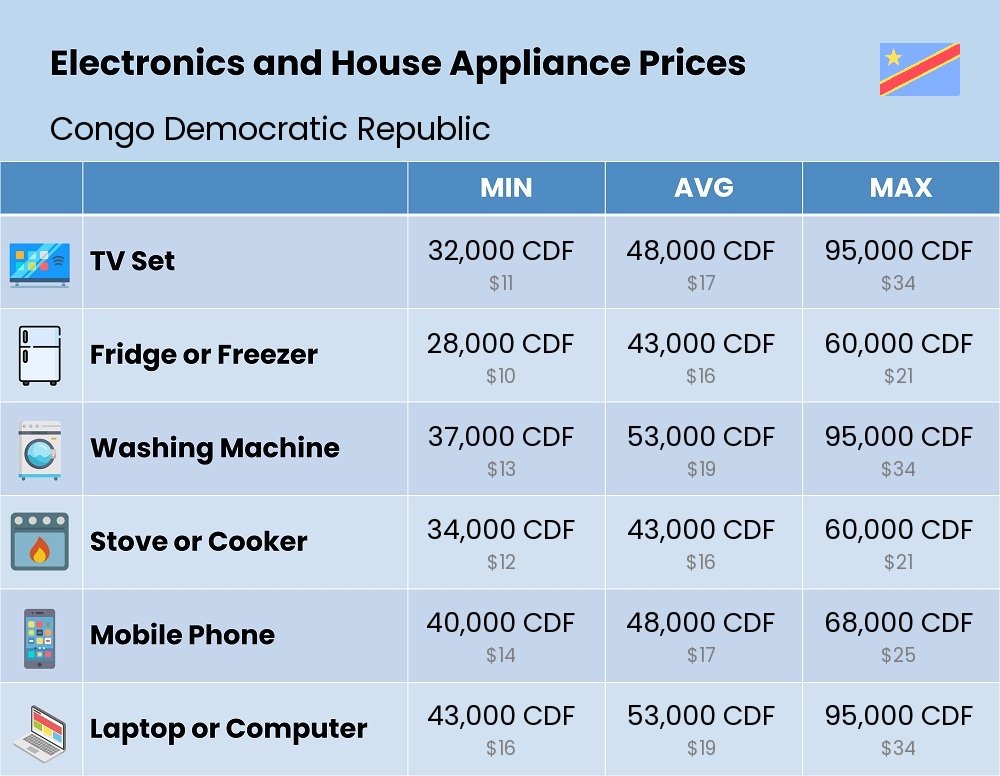
Electronics and House Appliance Costs

TV Set
| 32,000 CDF | 48,000 CDF | 95,000 CDF |
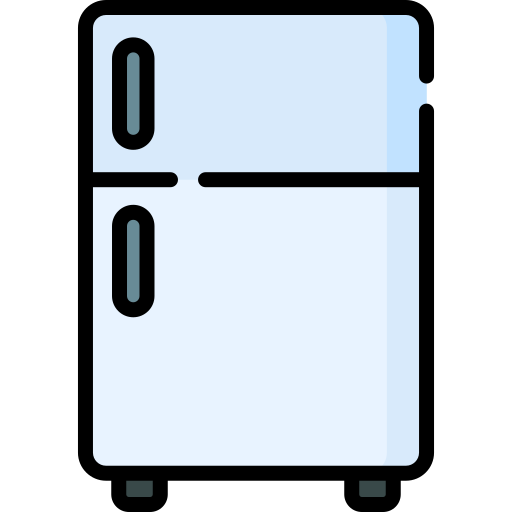
Fridge or Freezer
| 28,000 CDF | 43,000 CDF | 60,000 CDF |

Washing Machine
| 37,000 CDF | 53,000 CDF | 95,000 CDF |

Stove or Cooker
| 34,000 CDF | 43,000 CDF | 60,000 CDF |

Mobile Phone
| 40,000 CDF | 48,000 CDF | 68,000 CDF |

Laptop or Computer
| 43,000 CDF | 53,000 CDF | 95,000 CDF |
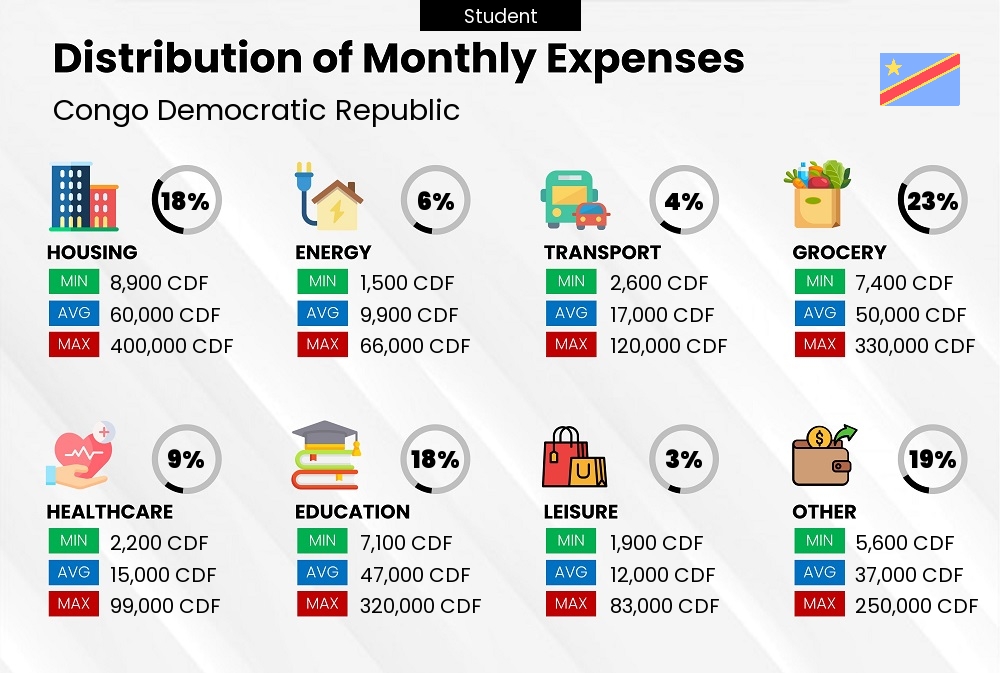
How do students spend their money in Congo Democratic Republic?
We asked thousands of students about their spending habits and expenditure break down.
Housing and accomodation expenditure for students
Accomodation Cost18%
18% of total expenses on average (13% to 24%)
| LOW | $3.2 8,900 CDF |
| AVERAGE | $22 60,000 CDF |
| HIGH | $240 660,000 CDF |
| Per Month |
Students in Congo Democratic Republic typically spend from 13% to 24% of their total monthly expenditure on housing with 18% being the average. The average monthly spend on housing is 60,000 CDF with expenditure ranging from 8,900 CDF to 660,000 CDF. This cost mainly goes for rent but it also includes other accommodation-related expenses.
Electricity, utilities, energy, water, internet, and mobile expenditure for students
Cost of utilities6%
6% of total expenses on average (4% to 10%)
| LOW | $0.54 1,500 CDF |
| AVERAGE | $3.6 9,900 CDF |
| HIGH | $40 110,000 CDF |
| Per Month |
Utility expenditure like electricity, water, and gas in Congo Democratic Republic ranges from 4% to 10% of total expenses with 6% being the average for most students. The average monthly cost of utilities is 9,900 CDF with 1,500 CDF and 110,000 CDF being the upper and lower limits for a student of four.
Transport, fuel, and commute expenditure for students
Cost of transport and fuel4%
4% of total expenses on average (4% to 10%)
| LOW | $0.94 2,600 CDF |
| AVERAGE | $6.3 17,000 CDF |
| HIGH | $70 190,000 CDF |
| Per Month |
Fuel consumption and cost of transport depend heavily on whether a student resides near school and work, but roughly speaking a student would expect to spend from 2,600 CDF to 190,000 CDF in a month on commuting with 17,000 CDF being the norm for most students. This means that money spent on transport constitutes about 4% of total spending on average but can go as low as 4% or as high as 10%.
Food, groceries, and basic shopping expenditure for students
Food and Groceries Cost23%
23% of total expenses on average (17% to 27%)
| LOW | $2.7 7,400 CDF |
| AVERAGE | $18 50,000 CDF |
| HIGH | $200 550,000 CDF |
| Per Month |
The average outlay on groceries and basic houshold items for a typical student in a month in Congo Democratic Republic is 50,000 CDF. The cost of groceries can range between 7,400 CDF to 550,000 CDF. Students spend on average about 23% on food and groceries with upper and lower bounds of 17% and 27% respectively.
Healthcare and medical services expenditure for students
Cost of healthcare9%
9% of total expenses on average (6% to 12%)
| LOW | $0.80 2,200 CDF |
| AVERAGE | $5.4 15,000 CDF |
| HIGH | $60 170,000 CDF |
| Per Month |
Students in Congo Democratic Republic allocate 6% to 12% of their total monthly expenditure to healthcare including health insurance and out-of-pocket medical expenses. The average spending on medical services and clinic visits is around 9%. The range of medical expenses range from 2,200 CDF to 170,000 CDF with 15,000 CDF being the norm for most students.
Leisure and shopping expenditure for students
Cost of leisure and shopping3%
3% of total expenses on average (2% to 7%)
| LOW | $0.67 1,900 CDF |
| AVERAGE | $4.5 12,000 CDF |
| HIGH | $50 140,000 CDF |
| Per Month |
This category mostly contains discretionary or non-essential expenses but also some non-discretionary spending like furniture for example. The monthly expenses range from 1,900 CDF to 140,000 CDF with 12,000 CDF being the average. Speaking of percentages, that equates to 2% to 7% of total expenses with an average of 3% for most students.
Education and schooling expenditure for students
Cost of education and schooling18%
18% of total expenses on average (11% to 23%)
| LOW | $2.5 7,100 CDF |
| AVERAGE | $17 47,000 CDF |
| HIGH | $190 530,000 CDF |
| Per Month |
Spending on education can vary drastically between different students. On average, education constitutes 18% of the monthly expenditure of students with 11% and 23% being the lower and upper bounds respectively. The average reported education cost is 47,000 CDF per month with 7,100 CDF being the minimum spent amount and 530,000 CDF being the maximum.
Other Expenses19%
19% of total expenses on average (13% to 25%)
| LOW | $2 5,600 CDF |
| AVERAGE | $13 37,000 CDF |
| HIGH | $150 410,000 CDF |
| Per Month |
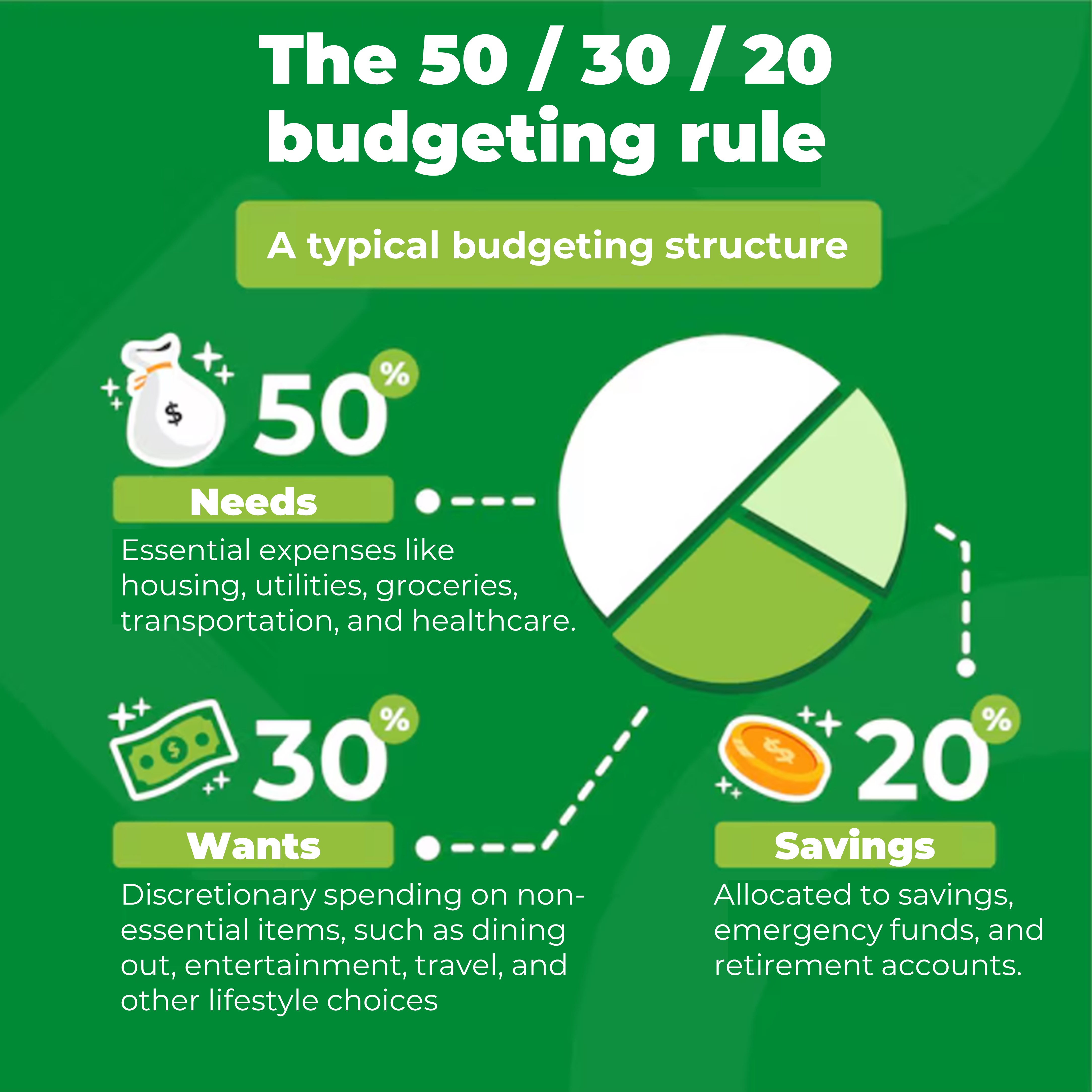
A typical and healthy budgeting structure
The 50/30/20 rule
Spending among different people can vary significantly based on factors such as their income, lifestyle,
location, and personal preferences. A commonly used guideline for budgeting is the 50/30/20 rule,
which suggests allocating your income into three main categories in the following percentages.
50% for needs and financial obligations
This category includes essential expenses like housing, utilities, groceries, transportation, and healthcare.
30% for wants and discretionary spending
This category covers discretionary spending on non-essential items, such as dining out, entertainment, travel, and other lifestyle choices.
20% for savings and emergency fund
This is the percentage that must be allocated to savings, emergency funds, and retirement accounts.
About financial planning, money management, and household budgeting
The 50/30/20 rule is used as a general guideline but may not be the best choice for all people. There are in fact many budgeting plans out there like the 70/20/10 and the 60/20/20 rules, all claiming to be the best. More important than all of this is to establish financial discipline by creating a budget tailored to your specific financial goals and situation. It is very important that your financial outflow be less than your income to maintain a healthy cash flow.
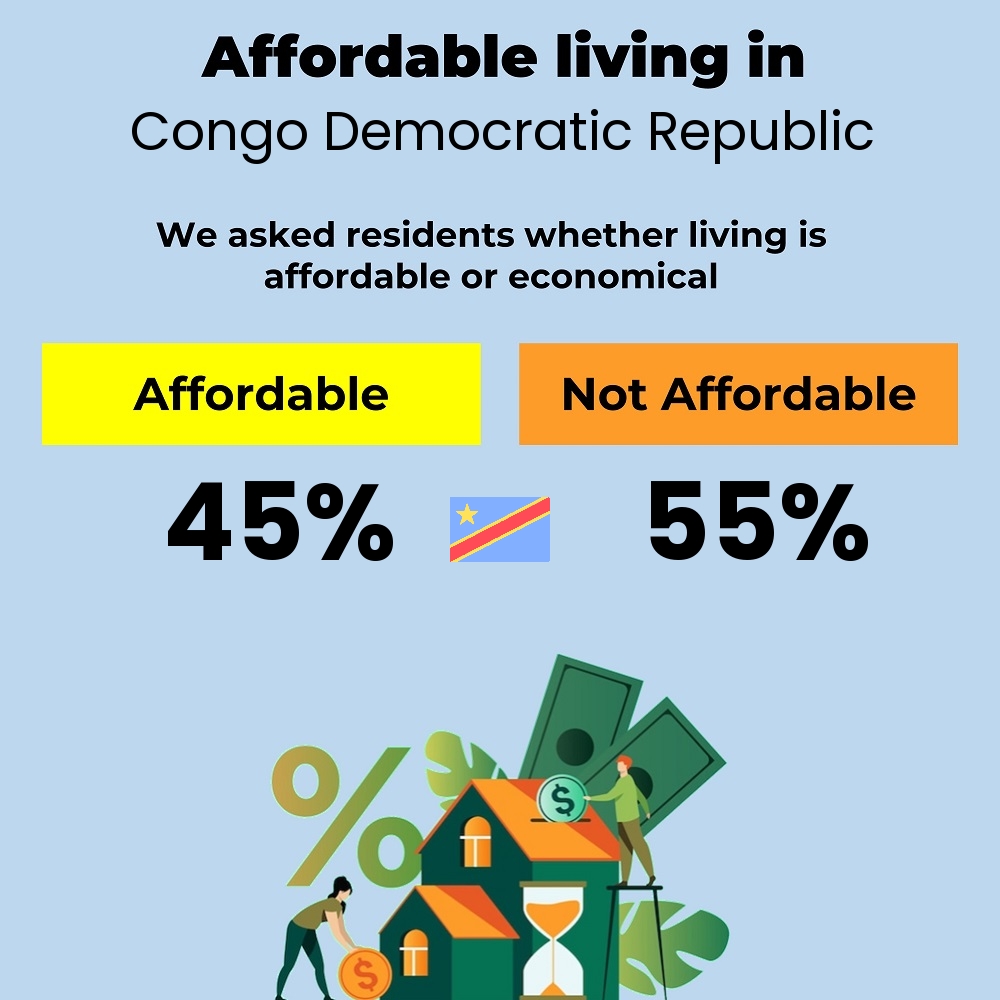
Affordable living in Congo Democratic Republic
Income and cost of living compatibility
We asked students one simple question and recorded their answers.
Is it affordable or economical to live in Congo Democratic Republic?
Around 45% of surveyed students think that living in Congo Democratic Republic is affordable with proper budgeting while 55% reported that it is just too expensive and not affordable even with frugality and thriftness.
Emergency Funds For Students
An emergency fund is a financial safety net comprised of easily accessible savings set aside to cover unexpected expenses or financial emergencies, typically amounting to three to six months' worth of living expenses. We asked students whether they have an emergency fund and the answers were as follows.
Yes45%
No55%
Based on the survey, 55% of the students living in Congo Democratic Republic said that they don't have an emergency fund while 45% said that they do.
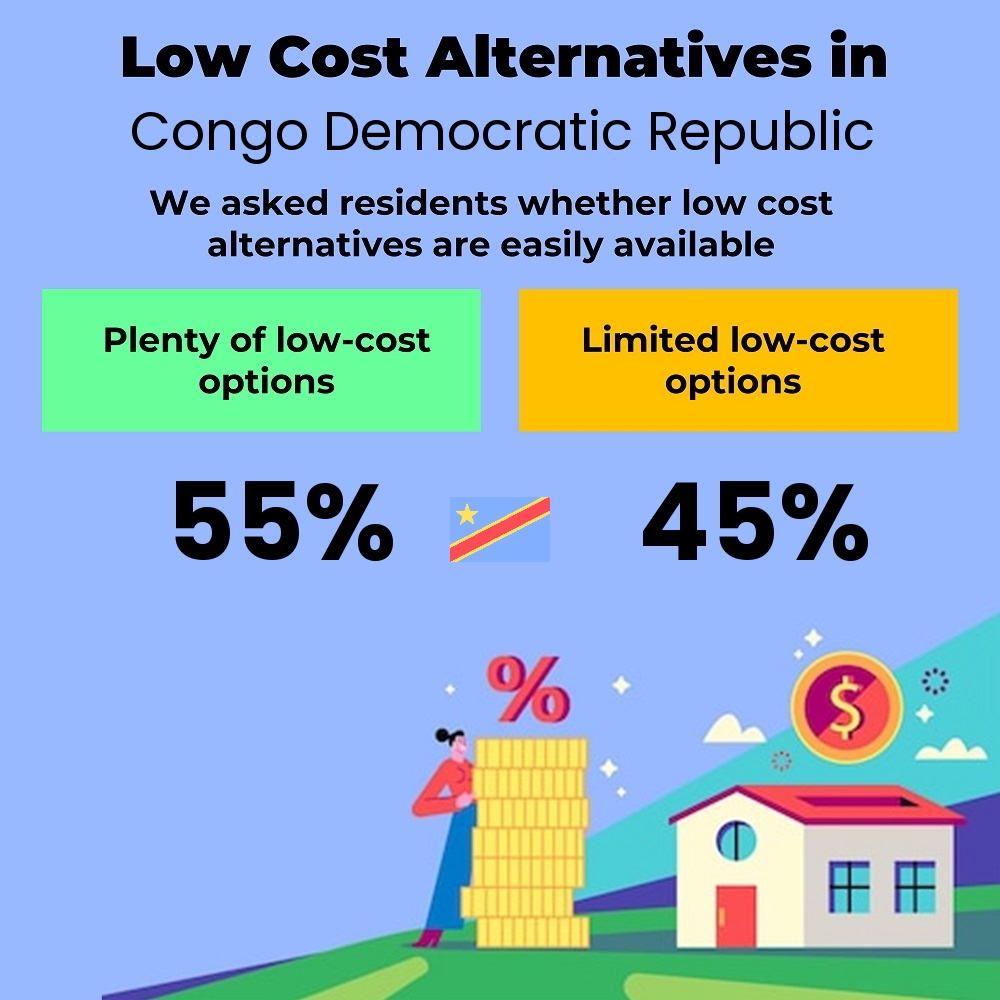
Low-cost alternatives in Congo Democratic Republic
People are always looking for ways to cut down expenses and reduce expenditures. The hallmark of any affordable place is the availability of discount stores, bargain deals, smart or secondhand shopping, refurbished items, and couponing. We asked students how easily cost-cutting is and the answers were distributed as follows:
Plenty of low-cost options55%
Few low-cost options45%
Based on the survey, 55% of the students living in Congo Democratic Republic have no problem finding low-cost alternatives to support a frugal lifestyle while 45% think that thriftness is difficult due to scarcity in discount markets and secondhand outlets.
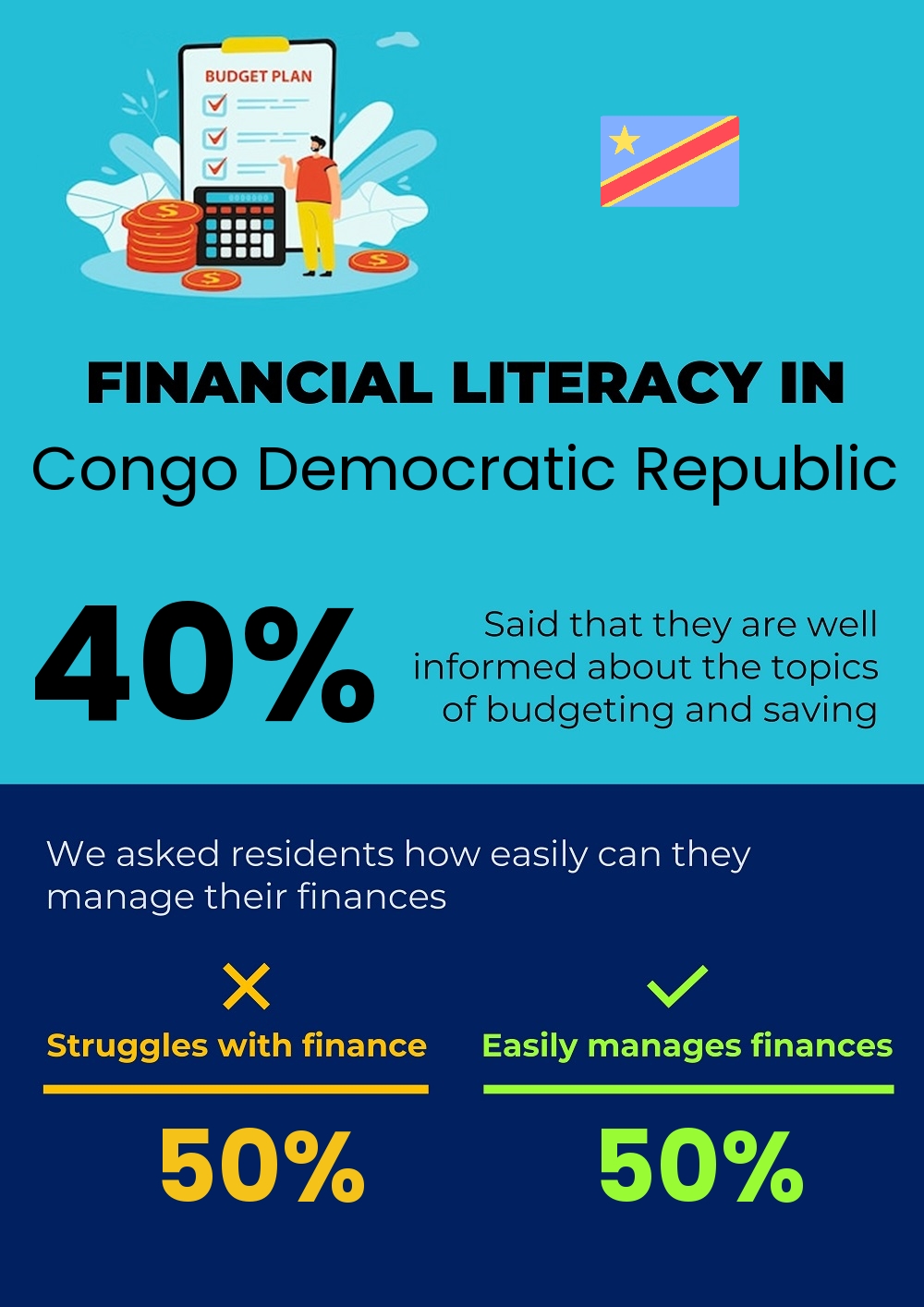
Financial Literacy in
Financial literacy is the knowledge of concepts and principles related to personal finance that allow individuals to make informed decisions regarding their money such as budgeting, saving, investing, borrowing, managing debt, financial risk management, and planning.
Financial Leteracy40%
We asked student guardians and parents in Congo Democratic Republic whether they acquired any adequate personal financial training in their lives. Approximately 60% of the people who participated in the survey said that they are not well informed about the topics of budgeting, saving, etc., and just manage things based on their own experience, while 40% said that they know about the general principles of personal finance from sources other than their own experience.
Difficulty in Budgeting and Financial Planning
We wanted to understand whether students of have problems or difficulties in managing their expenditures and savings so we asked people one simple question: do you struggle with your personal finances? 50% of the participants reported that they indeed struggle in creating budgets and in organizing their finances while 50% said that they have everything under control.
Struggles with finance50%
Easily manages finances50%
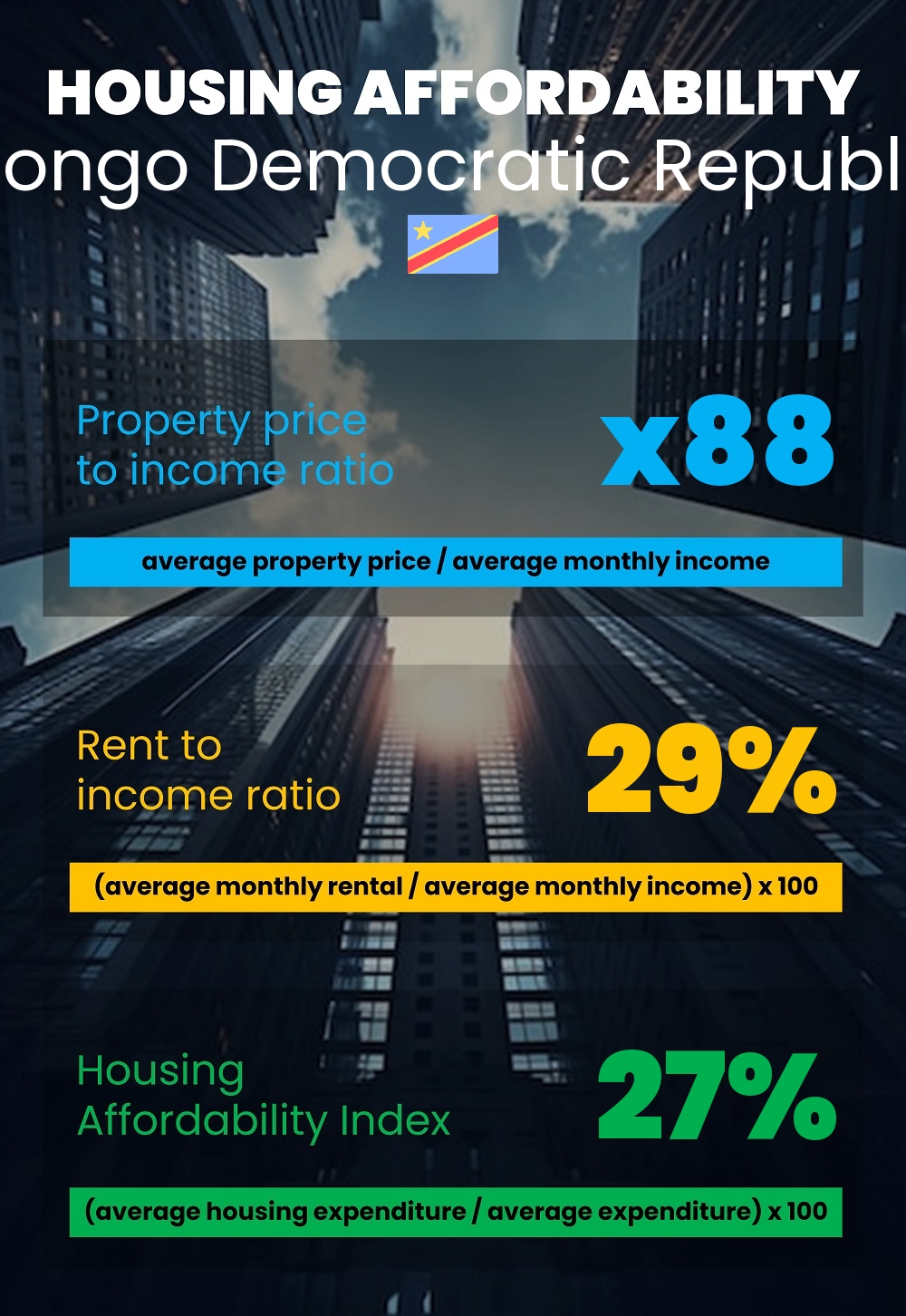
Housing costs, accommodation, and housing affordability in Congo Democratic Republic
Rental costs and house/apartment prices can vary drastically between different areas and locations.
Rent Cost in Congo Democratic Republic
Monthly Rent Prices

Studio apartment monthly rent cost
| 40,000 CDF | 60,000 CDF | 160,000 CDF |

1-bedroom apartment monthly rent cost
| 60,000 CDF | 95,000 CDF | 240,000 CDF |

2-bedroom apartment monthly rent cost
| 79,000 CDF | 120,000 CDF | 320,000 CDF |

3-bedroom apartment monthly rent cost
| 95,000 CDF | 160,000 CDF | 430,000 CDF |
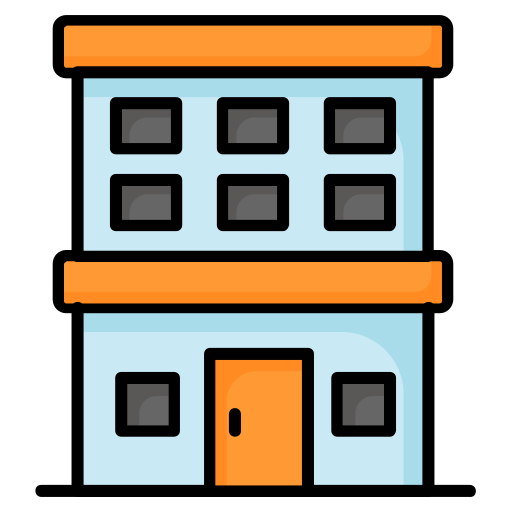
Furnished apartment monthly rent cost
| 190,000 CDF | 480,000 CDF | 950,000 CDF |
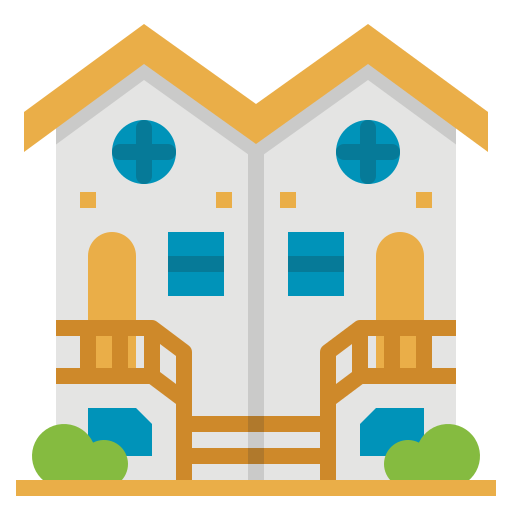
Townhouse monthly rent cost
| 160,000 CDF | 240,000 CDF | 680,000 CDF |

House monthly rent cost
| 190,000 CDF | 480,000 CDF | 950,000 CDF |

Villa monthly rent cost
| 240,000 CDF | 600,000 CDF | 950,000 CDF |
The monthly rental cost of a studio apartment in Congo Democratic Republic ranges between 40,000 CDF and 160,000 CDF, meanwhile the cost of monthly rental of a one-bedroom apartment can be anywhere from 60,000 CDF to 240,000 CDF. Two-bedroom rentals rate ranges between 79,000 CDF and 320,000 CDF per month. The monthly rental for a three-bedroom apartment ranges from 95,000 CDF to 430,000 CDF. The average rent of a townhouse in Congo Democratic Republic is around 240,000 CDF while house rental costs can be as high as 480,000 CDF per month. Finally, if you want to rent a villa, expect to pay anywhere from 240,000 CDF to 950,000 CDF per month.
Apartment and house prices in Congo Democratic Republic
Cost of buying a property

Studio apartment price

1-bedroom apartment price

2-bedroom apartment price

3-bedroom apartment price

Townhouse price
| 68M CDF | 160M CDF | 600M CDF |

House price
| 79M CDF | 480M CDF | 680M CDF |
| $29,000 | $170,000 | $250,000 |

Villa price
| 95M CDF | 530M CDF | 790M CDF |
| $34,000 | $190,000 | $290,000 |
The average price of a studio apartment in Congo Democratic Republic can range from 7.9M CDF to 24M CDF depending on location. One bedroom cost can be anywhere from 9.5M CDF to 60M CDF. A villa can cost you 530M CDF on average with prices ranging from 95M CDF to 790M CDF.
If you're leasing or purchasing, housing costs in Congo Democratic Republic will probably constitute your biggest expenditure, yet it's an area where you wield considerable influence. This is due to the substantial variance in housing prices across communities. Keep in mind the location of your workplace and the accessibility of essential amenities to prevent negating the savings from lower rental rates with increased transportation expenses.
House / apartment prices to income ratio
Property price to income ratio
( average property price / average monthly income ) x 100
| 31 | x88 monthly income | 193 |
Property prices in Congo Democratic Republic can be x88 to x193 multiples of the monthly income depending on the property and the income of the person. On average, property prices are approximately x88 multiples of the average monthly salary in Congo Democratic Republic.
Rent to income ratio
Rent to income ratio
( monthly rental / monthly income ) x 100
The average rent-to-income ratio in Congo Democratic Republic is around 29%. This means that people pay 29% of their income for rent. Those figures can range from 19% to 39% depending on the salary, location, and type of property.
The housing-to-income ratio is a very important metric to evaluate and measure how affordable living is in a particular area, city, or country since housing comprises the biggest chunk of expenditure. A higher housing to income ratio means that the place is relatively expensive. The figure by itself does tell much. It only starts to make sense when comparing the housing to income ratio across different locations.
Housing affordability index
The housing affordability index measures how affordable accommodation is in a particular place. This can measured in multiple ways, the most common being housing expenditure to total expenditure ratio and the rent to income ratio. The housing expenditure ratio is a figure reported by individuals on the percentage they allocate for housing. Rent to income ratio is calculated by dividing the average monthly rent by the average income. Because these values are both percentages, we can find their average and get the best of the two worlds.
Housing Affordability Index
27% Property Taxes
Real estate owners pay property taxes to local tax authorities, which are determined by the assessed value of their property. Typically, these taxes are paid once a year. Property tax funds contribute to community development, financing infrastructure improvements, public services, and local education initiatives.
Home Maintenance Costs
Home maintenance costs encompass various expenses associated with the upkeep and repair of a residence. These expenditures include regular tasks such as lawn care, pest control, and HVAC system servicing, as well as occasional repairs and renovations like fixing leaks, painting, or replacing appliances.
| 740 CDF | 7,400 CDF | 110,000 CDF |
Urban vs. rural living costs
Urban living typically entails higher housing and transportation costs due to demand and limited space, while rural areas generally offer lower housing expenses but may have higher prices for goods and services. The differnce in rental rates between urban areas and rural areas can be as high as 300% in some cases.
Monthly costs and expenses of energy and basic utilities in Congo Democratic Republic
Utilities expenditure can vary slightly between different areas and locations.
Energy, electricity, water, gas, internet, and mobile cost in Congo Democratic Republic

Utility Bill Cost / Electricity + Water + Gas / Student
| 1,500 CDF | 9,900 CDF | 110,000 CDF |

Internet and cable cost
| 2,400 CDF | 4,800 CDF | 6,300 CDF |

Mobile phone bill and charges
| 1,900 CDF | 3,200 CDF | 9,500 CDF |
Because most utility bills club electricity, water, and gas costs in one bill, we can't provide a breakup for each type of utility and will display electricity, gas, and water as single cost.
The average monthly energy and water consumption of students is around 9,900 CDF. The cost of internet and WiFi ranges from 2,400 CDF to 6,300 CDF with 4,800 CDF being the average internet bill. Finally, the average monthly mobile charges is around 3,200 CDF but can range between 1,900 CDF and 9,500 CDF depending on consumption. Mobile charges include both calling minutes as well as data packages.
Energy / Utility expense to income ratio
( monthly utility expenses / monthly income ) x 100
The average utility-to-income ratio in Congo Democratic Republic is around 6%. This means that people pay 6% of their income for energy, water, internet, and mobile charges. Those figures can range from 3% to 10% depending on salary and location.
Food Prices, Dining Expenses, and Grocery Costs in Congo Democratic Republic
Grocery / Food expenditure and prices can vary drastically between different areas and locations.
Prices and cost of goods and services in Congo Democratic Republic
Dining out, food, and beverages costs. Price variations for common food items.

Fast food combo meal price
| 480 CDF | 950 CDF | 1,600 CDF |
The average price of a regular combo meal at a fast food outlet or chain like McDonald's, Pizzahut, or KFC in Congo Democratic Republic is approximatly 950 CDF with meal cost ranging from 480 CDF to 1,600 CDF. The typical combo meal consists of a burger, french fries, and a drink.

Restaurant meal for one price
| 1,600 CDF | 2,400 CDF | 4,800 CDF |
If you are planning to have a nice meal at a mid-range restaurant, expect to pay anywhere between 1,600 CDF and 4,800 CDF with 2,400 CDF being the average price of a plate for one person at a regular restaurant in Congo Democratic Republic.

Fine dining meal for one price
| 3,200 CDF | 4,800 CDF | 19,000 CDF |
The price range of a meal at fine-dining restaurant is 3,200 CDF to 19,000 CDF with the average cost being 4,800 CDF for one person. This is what you would expect to pay a top-tier diner in Congo Democratic Republic.

Beverage prices, cappuccino, latte etc..
The average price of a regular beverage like cappuccino or latte at Starbucks, Costa, or similar coffee shops and cafes in Congo Democratic Republic is around 630 CDF. Price ranges between 400 CDF and 950 CDF depending on the type of beverage, the size, and optional add-ons.
Grocery and market costs

Large bottle of milk price
The average price of a large bottle of milk in Congo Democratic Republic is 380 CDF. The maximum what you would pay for milk is 480 CDF and the minimum being 320 CDF depending on the brand of milk and other properties.

12 eggs price
A dozen eggs costs around 320 CDF on average with 240 CDF and 480 CDF being the lower and upper limits respectively.

Fresh whole chicken price
The price range of a fresh whole chicken in Congo Democratic Republic is between 540 CDF and 990 CDF depending on the size of the chicken and whether it is oraganic or not. The average price is approximatly 700 CDF.

Pack of beef price
| 630 CDF | 950 CDF | 1,900 CDF |
The price of a regular pack of beef or meat is around 950 CDF. A pack of beef contains around 1Kg or 1lb depending on packing.

Medium bag of rice price
A bag of rice in Congo Democratic Republic costs around 350 CDF on average with prices rangeing between 260 CDF and 500 CDF depending on the brand and quality.

Bag of tomatos price
A bag of tomatoes costs anywhere from 95 CDF to 240 CDF. A bag of tomatoes denotes 1Kg or 1lb depending on location.

Bag of apples price
A bag of apples costs 220 CDF on average. A bag of apples denotes 1Kg or 1lb depending on location.
Expenditure on food and grocery for students
Students' spending on grocery ranges from 7,400 CDF to 550,000 CDF with the location, income, and size of the student being the most determinite factors.
Published: April 1, 2024 Last Update: September 8, 2025
